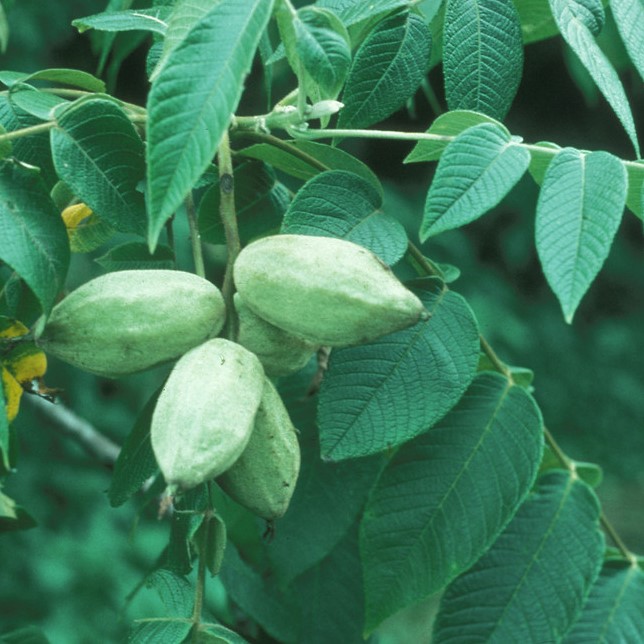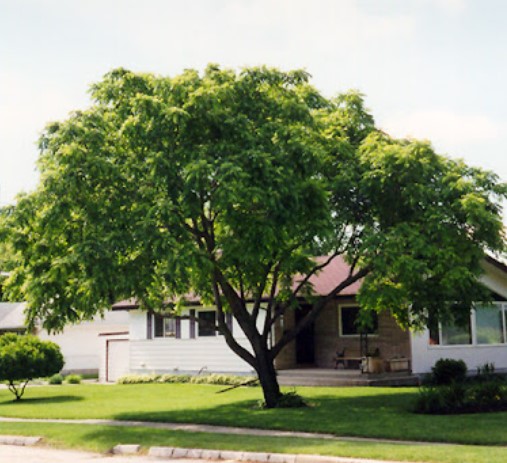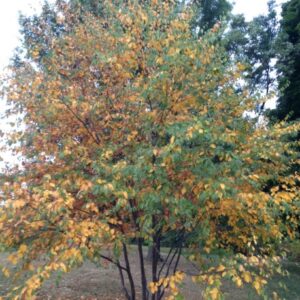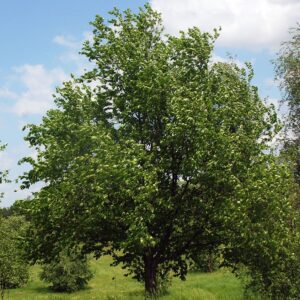Description
Butternut Tree – 1 Yr Old Seedling
Overview
The Butternut (Juglans cinerea), also known as White Walnut, is a majestic deciduous tree renowned for its sweet, buttery-flavored nuts and elegant, pinnately compound leaves. This cold-hardy tree is native to North America and serves as a valuable source of food for humans and wildlife. Its broad canopy and attractive form make it a wonderful addition to large landscapes, parks, and naturalized areas.
Butternut Tree Native Range
Butternut is native to the eastern United States and southeastern Canada, thriving in well-drained soils near streams, forest edges, and meadows.
Growth and Form
- Height: Reaches 40–60 feet at maturity.
- Spread: Develops a broad crown with a spread of 35–50 feet.
- Growth Rate: Moderate, with annual growth of 12–18 inches.
- Foliage: Light green, compound leaves turn yellow in fall.
- Bark: Light gray with ridged patterns, adding winter interest.
Ecological Benefits
- Wildlife Habitat: Produces nuts that are a vital food source for squirrels, deer, and birds.
- Soil Enrichment: Leaves and husks decompose, enriching soil nutrients.
- Pollinator Friendly: Male catkins attract early-season pollinators.
Butternut Tree Hardiness and Climate Tolerance
- Hardiness Zones: 3–7, suitable for cold climates and temperate regions.
- Cold Tolerance: Thrives in temperatures as low as -40°F (-40°C).
- Soil Preferences: Prefers well-drained, loamy soils; tolerates rocky and sandy soils.
Planting and Care
- Planting Location: Requires full sun and ample space for canopy and root development.
- Watering: Maintain consistent watering during the first few years; drought-tolerant once established.
- Fertilization: Fertilize in spring with a balanced, slow-release fertilizer.
- Pruning: Prune in late winter to remove dead wood and shape the tree.
Uses
- Nut Production: Butternuts are prized for their rich, buttery flavor, suitable for baking, cooking, or eating raw.
- Ornamental: Attractive form and foliage make it a focal point in large landscapes.
- Wildlife Support: Provides essential food for various mammals and birds.
- Timber: The soft, light wood is used in furniture, carving, and specialty crafts.
Potential Problems
- Diseases: Vulnerable to Butternut Canker; plant in well-drained locations and monitor for symptoms.
- Pests: Occasionally affected by weevils and husk maggots.
- Competition: Roots produce juglone, which can inhibit the growth of nearby plants sensitive to this compound.







Reviews
There are no reviews yet.